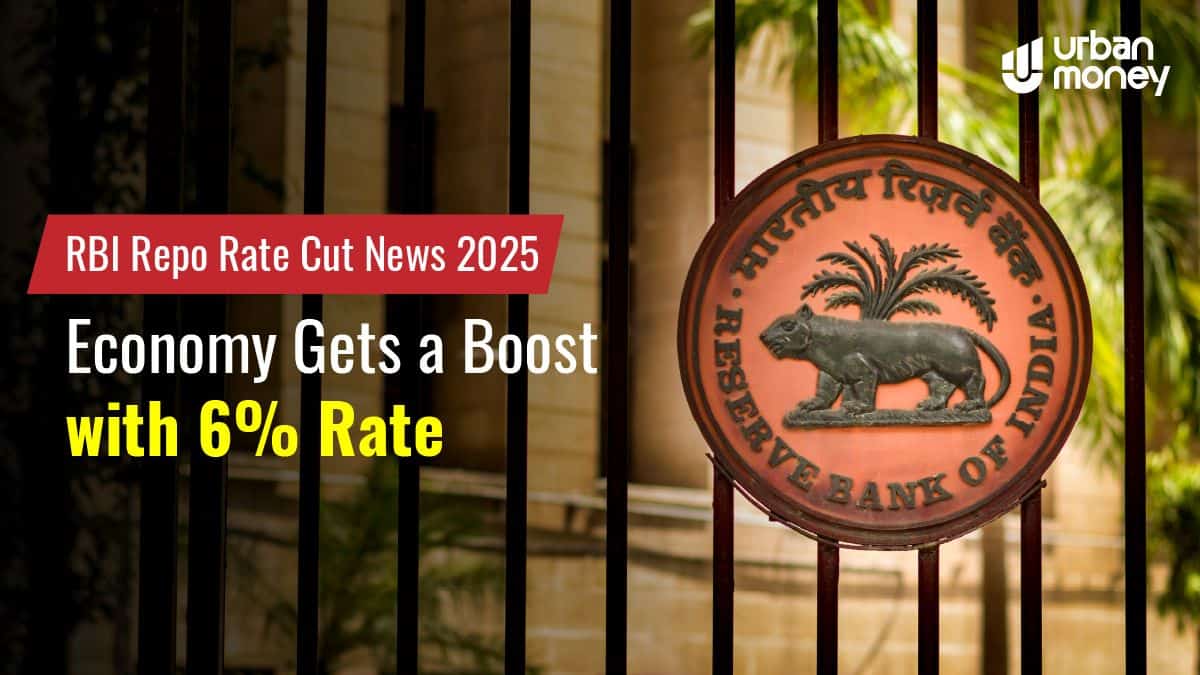Top 10 Best Private Banks in India List 2025
January 09, 2025
Personal Loan Archive | Debt To Income (DTI) Ratio : Calculation Formula, Types and Limitations

November 20, 2024


Better debt management is crucial to avail of the available financial opportunities. Whether you wish to secure a personal loan, business loan, home loan, or even credit card, lenders have various metrics to determine your creditworthiness. One such metric they consider is your Debt-to-Income ratio (DTI). A good DTI ratio can enhance your reliability as a borrower and result in quick loan approval with favourable terms. On the other hand, a poor DTI ratio might signal potential financial stress, leading to higher interest rates or even loan denial.
This guide aims to provide a comprehensive overview of the DTI ratio. We primarily explain what a Debt-to-Income ratio is, how to calculate a DTI ratio, and why it matters in loan applications. Thus, you can better manage your debts, improve your financial health, and make informed decisions when applying for loans. Let’s scroll down to learn more.
Table of Contents
ToggleThe Debt-to-Income (DTI) ratio is a financial metric to compare your monthly debt payments to your gross monthly income. Moreover, the DTI ratio is expressed as a percentage and is typically used by lenders to assess a borrower’s ability to manage monthly debt obligations. A lower DTI ratio indicates that a smaller portion of income goes to debt payments, suggesting better financial health and making the borrower more attractive to lenders. Conversely, a higher DTI ratio indicates higher debt levels relative to income, which may refer to financial strain and increased risk for lenders.
An optimal Debt-to-Income (DTI) ratio in India can be around 20-30%. I.e., your total monthly debt payments, including loans, credit card bills, and other financial obligations, should not exceed 20-30% of your gross monthly income. So, maintaining a DTI ratio within this range is prudent. Lenders typically use this benchmark to assess your risk level and ability to manage additional debt. A lower DTI ratio suggests sufficient income to cover your debts comfortably, making you a more attractive and less risky borrower to lenders.
There are two primary forms of Debt-to-Income (DTI) ratios. Each provides a different perspective on your financial obligations as follows:
This measures the percentage of your gross monthly income that goes towards housing-related costs. It includes expenses such as rent or mortgage payments, property taxes, homeowners insurance, and, in some cases, homeowners association fees. The front-end ratio helps lenders assess your ability to afford housing costs relative to your income. A lower front-end ratio indicates that you are not overburdened by housing expenses, making you a more favourable candidate for loans and mortgages.
This comprehensive measure includes all your monthly debt obligations and housing costs. It ideally covers credit card payments, car loans, student loans, personal loans, and other recurring debts. The back-end ratio offers a holistic view of your financial commitments and overall debt load. Lenders use this ratio to assess your total debt burden and ensure you can manage all your obligations without financial strain. A lower back-end ratio suggests better debt management and financial stability. This ultimately improves your chances of securing new credit.
Following are the steps regarding how to calculate the DTI ratio:
DTI Ratio = (Total Monthly Debt Payments / Gross Monthly Income) × 100
Below are the applicable examples of how to calculate the DTI ratio:
RTI Ratio = (₹30,000 / ₹1,00,000) × 100 = 30%
RTI Ratio = (₹50,000 / ₹1,00,000) × 100 = 50%
Note: You can also use the Debt-to-Income ratio calculator online. Many banks and NBFCs feature this user-friendly tool on their websites. Thus, users can easily access it and calculate their Debt-to-Income ratio for personal loans, mortgages, or other purposes.
Read – No-Cost EMI Guide: How It Works, Advantages and Eligibility
A lower DTI ratio typically suggests better financial health and a greater likelihood of loan approval. At the same time, borrowers with a higher DTI ratio may find it difficult to secure better credit options with attractive rates and terms. Follow the description given below for a better understanding of what is a good Debt-to-Income ratio:
A DTI ratio below 20% indicates excellent financial health. It means that only a small portion of income is used to pay off debts, leaving plenty of room for savings and additional expenses. Lenders view borrowers with such low DTI ratios very favourably.
A DTI ratio between 20% and 36% is considered good. This range suggests that while you have some debt, it is manageable relative to your income. Most lenders consider this a safe range, indicating you are a low-risk borrower.
When your DTI ratio falls between 35% and 50%, it indicates moderate financial stress. Your available debts might be manageable, but you have limited flexibility for additional borrowing or unexpected expenses. Lenders may still approve loans but impose stricter terms and higher interest rates.
A DTI ratio above 50% signals high financial risk. Over half of your income is dedicated to debt payments, leaving little room for savings or other expenses. Lenders may view this as a significant risk, and obtaining new credit or loans could be challenging. Hence, reducing your debt load or increasing your income is advisable to improve this ratio.
Let’s examine some key factors that highlight the significance of the Debt-to-Income (DTI) ratio in India:
Several key factors influence the Debt-to-Income (DTI) ratio. Understanding these elements can help you manage your DTI ratio more effectively and improve your financial health:
Your gross monthly income is a primary component in calculating the DTI ratio. This includes your salary, bonuses, rental income, and other sources of income. A rise in monthly income, such as a salary hike, additional job, or investment returns, can improve your DTI ratio by increasing the denominator in the calculation. In other words, more income means your existing debts take up a smaller percentage of your earnings, ultimately lowering your DTI ratio.
All your monthly debt payments contribute to your total debt obligations. This includes mortgages, car loans, credit card payments, student loans, and personal loans. Reducing these obligations by paying off debts can significantly lower your DTI ratio. Conversely, taking on additional debt increases your debt obligations and can worsen your DTI ratio, as a higher portion of your income goes towards debt repayment.
Any changes in your employment status can affect your DTI ratio. Losing a job, switching to a lower-paying job, or experiencing a decreased income can negatively impact your DTI ratio, as you have less income to cover your debt obligations. On the other hand, getting a promotion or a new job with a higher salary can positively impact your DTI ratio by increasing your income.
The interest rates on your debts directly affect your monthly payments. Higher interest rates increase your monthly debt payments, thereby increasing your DTI ratio. Refinancing existing loans at lower interest rates can reduce your monthly payments, thus improving your DTI ratio. Namely, lower interest rates mean you pay less in interest each month, reducing your total monthly debt obligations.
Maintaining a healthy Debt-to-Income (DTI) ratio is essential for financial stability and improving your creditworthiness. Here are some detailed strategies to manage your DTI ratio effectively:
Explore various ways to boost your income. Consider taking on side jobs or freelance work that matches your skills and schedule. Investing in stocks, bonds, or real estate can also provide extra income. Look for opportunities for professional growth, such as seeking promotions or negotiating a higher salary at your current job. Higher-income improves your DTI ratio by increasing your overall earnings, making your debt a smaller portion of your income.
Focus on paying down high-interest debts first. Use strategies like the debt snowball method or the avalanche method. Notably, the debt snowball method involves paying off the smallest debts first, giving you quick wins and motivation. The avalanche method targets debts with the highest interest rates first, saving you money in the long run. Avoid taking on new debt unless absolutely necessary. Reducing your debt will lower your DTI ratio and free up more income for savings and other financial goals.
Refinancing high-interest loans can significantly lower your monthly payments. This strategy is especially effective for large debts like mortgages, student loans, and auto loans. To maximise benefits, compare different refinancing options and calculate the long-term savings. Ensure that the new loan terms are favourable and outweigh any potential costs associated with refinancing. This proactive approach can lead to substantial savings and help improve your overall financial health.
Creating and sticking to a budget is crucial for managing your finances. Track your income and expenses to identify areas where you can cut costs. Prioritise essential expenses and allocate some of your income to pay off debts. A well-structured budget helps you avoid unnecessary spending and ensures you have enough to meet your debt obligations. Regularly review and adjust your budget as your financial situation changes to stay on track.
Managing your Debt-to-Income (DTI) ratio is key to good financial health. A low DTI ratio, ideally below 36%, improves your chances of getting favourable loan terms. Increase income through additional jobs or investments. Reduce debt by paying off high-interest loans. Refinance loans to lower payments. Stick to a budget to control expenses and prioritise debt repayment. A healthy DTI ratio enhances your creditworthiness, provides financial stability, and prepares you for future opportunities.
Read – Buy Now Pay Later (BNPL) in India – All You Need to Know
The DTI ratio helps lenders assess a borrower’s ability to manage monthly payments and repay debts, ensuring the borrower isn’t overextended financially .
The front-end ratio measures housing-related costs against income, while the back-end ratio includes all monthly debt obligations.
A lower DTI ratio shows lenders that you manage debt well, improving your chances of approval and favourable terms. On the contrary, a high DTI ratio may lead to loan denial or higher interest rates due to perceived risk.
Yes, a lower DTI ratio can lead to lower interest rates as it signals lower financial risk to lenders, while a higher DTI ratio may result in higher rates due to increased default risk.
The DTI calculation includes all your monthly debts, such as mortgage payments, credit card bills, car loans, student loans, and personal loans, as well as other obligations like alimony and child support .
The DTI ratio itself doesn’t impact your credit score, but high debt levels can affect credit utilisation, which negatively influences your credit score. Why do lenders consider the DTI ratio important?
How do front-end and back-end DTI ratios differ?
How can the DTI ratio influence my home loan application?
Can the DTI ratio influence my interest rate?
Which debts are factored into the DTI calculation?
Will my DTI ratio affect my credit score?










© 2025 www.urbanmoney.com. All rights reserved.

Need Loan Assistance?

Thank you for showing your interest. Our agent will get in touch with you soon.

















